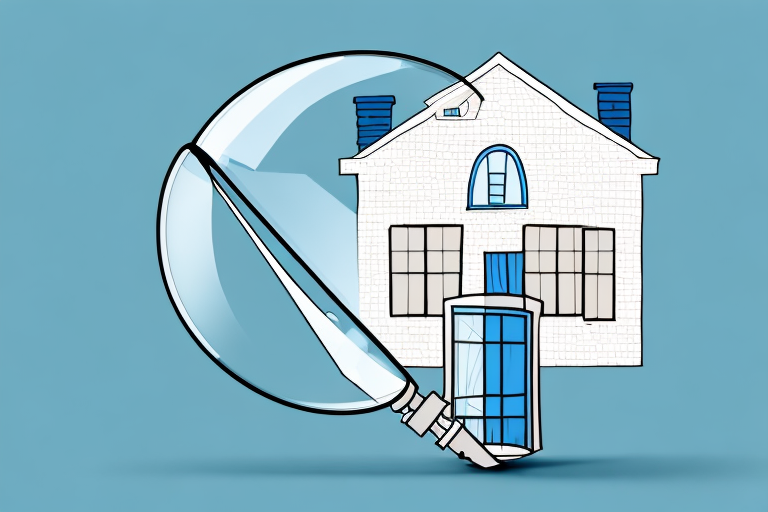Demystifying Conveyancing: An Essential Guide for First-time Buyers
In the quest to fulfill the dream of owning a home, first-time buyers may find themselves overwhelmed by the complex and unfamiliar processes involved. One such process is conveyancing. But fear not! This essential guide aims to demystify conveyancing, providing a comprehensive understanding of its basics and an insight into its significance in property transactions. We will also delve into the various stages of the conveyancing process, the role of a conveyancer, common terms used, potential pitfalls to be aware of, as well as the costs involved. So, let’s dive right in!
Understanding the Basics of Conveyancing
Conveyancing is a crucial aspect of the real estate industry, as it involves the legal and administrative process of transferring the ownership of a property from one person to another. This intricate process ensures that the transfer is smooth, lawful, and transparent.
What is Conveyancing?
At its core, conveyancing Sydney refers to the legal and administrative process of transferring the ownership of a property from one person to another. It involves intricate procedures, documentation, and checks to ensure a smooth and lawful transition of property ownership.
Conveyancing involves various steps that need to be followed diligently. These steps include conducting property searches, preparing legal documents, verifying the seller’s title, and ensuring that all necessary taxes and fees are paid. Each step is essential to ensure that the property transfer is legally binding and all parties involved are protected.
Property transactions can be complex, involving multiple parties such as buyers, sellers, real estate agents, and mortgage lenders. Conveyancing acts as a bridge between all these parties, ensuring that everyone’s interests are protected and that the transaction is carried out in accordance with the law.

The Importance of Conveyancing in Property Transactions
Conveyancing plays a vital role in property transactions by safeguarding both buyers and sellers. It provides legal protection, certainty, and clarity, ensuring that the property is legally transferred from the seller to the buyer. Additionally, conveyancing helps identify any potential issues or risks associated with the property before completing the purchase.
During the conveyancing process, various searches and checks are conducted to uncover any potential problems with the property. These searches may include checking for outstanding mortgages, liens, or other encumbrances on the property. By identifying these issues early on, buyers can make informed decisions and negotiate with the seller if necessary.
Furthermore, conveyancing ensures that all necessary legal documents are prepared accurately and in compliance with the law. These documents include the contract of sale, transfer of ownership, and mortgage agreements. The conveyancer or solicitor involved in the process will review these documents to ensure that they accurately reflect the terms and conditions agreed upon by both parties.
Another important aspect of conveyancing is the settlement process. This is when the final payment is made, and the property officially changes hands. The conveyancer will ensure that all necessary funds are transferred, and the necessary paperwork is completed to finalize the transaction.
Overall, conveyancing is a critical step in any property transaction. It provides peace of mind to both buyers and sellers, ensuring that the transfer of ownership is legally binding and all parties are protected. By engaging a professional conveyancer or solicitor, individuals can navigate the complexities of property transactions with confidence.
The Conveyancing Process Explained
The conveyancing process is a crucial step in buying or selling a property. It involves a series of stages that ensure a smooth and legally binding transaction. Let’s take a closer look at each stage:
Pre-contractual Stage
The pre-contractual stage is the initial phase of the conveyancing process. It is a critical step where various activities take place to ensure that both the buyer and seller have all the necessary information to proceed with the transaction.
During this stage, property searches are conducted to gather essential information about the property. These searches include checking for any planning permissions, environmental issues, or potential legal restrictions that may affect the property’s value or use.
Additionally, the buyer’s solicitor reviews the property information provided by the seller. This information includes details about the property’s title, boundaries, any ongoing disputes, and any relevant legal documents.
Furthermore, negotiations between the buyer and seller take place during this stage. Both parties discuss and agree upon the terms of the sale, including the purchase price, any additional fixtures or fittings included, and the proposed completion date.
Buyers may also choose to arrange a survey or inspection of the property during this stage. This step allows them to assess the property’s condition and identify any potential issues or repairs that may need to be addressed before completing the purchase.
Contract Exchange
Once the terms are agreed upon, the buyer and seller proceed to exchange contracts. This stage is a significant milestone in the conveyancing process as it legally binds both parties to the transaction.
The contracts outline the agreed-upon terms and conditions, including the purchase price, any additional agreements, and the completion date. It also includes important details such as the property’s title, boundaries, and any relevant legal restrictions.
During the contract exchange, the buyer typically pays a deposit, usually a percentage of the property’s purchase price. This deposit serves as a commitment from the buyer and provides a level of security to the seller.

Completion and Post-completion
The completion stage is the final step in the conveyancing process. It is the moment when the full payment is made, and ownership of the property is transferred from the seller to the buyer.
On the completion date, the buyer’s solicitor transfers the funds to the seller’s solicitor. Once the payment is received, the seller hands over the keys to the property, and the buyer officially becomes the new owner.
Post-completion tasks are essential to ensure a smooth transition and legal compliance. These tasks may include registering the property with the relevant authorities to update the ownership records. The buyer’s solicitor will also handle the payment of stamp duty, a tax imposed on property transactions, to the appropriate tax authorities.
Furthermore, the buyer’s solicitor will update the Land Registry with the new ownership details. This step ensures that the property’s title is officially transferred to the buyer’s name, providing them with legal proof of ownership.
In conclusion, the conveyancing process involves several stages that are crucial for a successful property transaction. From conducting property searches to exchanging contracts and completing the purchase, each step ensures that the buyer and seller are protected and the transaction is legally binding.
Role of a Conveyancer in Property Buying
Buying a property can be a complex and overwhelming process, involving numerous legal requirements and paperwork. This is where a conveyancer comes in. A conveyancer is a legal professional who specializes in property transactions and plays a crucial role in guiding and representing buyers throughout the conveyancing process.
One of the key responsibilities of a conveyancer is to conduct property searches. This involves investigating various aspects of the property, such as its title, boundaries, and any potential legal issues. By conducting thorough searches, the conveyancer ensures that the buyer is fully aware of any potential risks or restrictions associated with the property.
In addition to property searches, a conveyancer also deals with contracts. They review and negotiate the terms and conditions of the contract on behalf of the buyer, ensuring that their interests are protected. This includes examining the contract for any hidden clauses or unfavorable terms that may put the buyer at a disadvantage.
Furthermore, a conveyancer is responsible for ensuring that all legal requirements are met throughout the buying process. This includes liaising with various parties involved, such as the seller’s conveyancer, mortgage lender, and local authorities. The conveyancer ensures that all necessary documents are prepared and submitted correctly and on time, minimizing the risk of delays or complications.
Legal Responsibilities of a Conveyancer
When it comes to the legal responsibilities of a conveyancer, they go beyond just paperwork and transactions. A conveyancer is obligated to act in the best interests of their client and provide them with accurate and reliable advice throughout the process.
One of the key legal responsibilities of a conveyancer is to ensure that the buyer has a clear and marketable title to the property. This means verifying that the seller has the legal right to sell the property and that there are no outstanding claims or encumbrances that could affect the buyer’s ownership.
Additionally, a conveyancer is responsible for conducting various searches to identify any potential issues that may affect the property. This includes searches for planning permissions, environmental concerns, and any other relevant information that could impact the buyer’s decision to proceed with the purchase.
Furthermore, a conveyancer is also responsible for ensuring that all necessary legal documents, such as the contract of sale and transfer of ownership, are properly prepared and executed. They must ensure that all parties involved understand the terms and conditions of the contract and that it accurately reflects the buyer’s intentions.
Overall, the legal responsibilities of a conveyancer are extensive and crucial in ensuring a smooth and legally sound property buying process for the buyer.

How to Choose the Right Conveyancer
Choosing the right conveyancer is an important decision that can greatly impact the outcome of a property purchase. With so many conveyancers available, it is essential to consider certain factors before making a choice.
Firstly, it is important to consider the expertise and experience of the conveyancer. Look for a conveyancer who specializes in property transactions and has a solid track record of successfully handling similar cases. This will give you confidence that they have the necessary knowledge and skills to navigate the complexities of the conveyancing process.
Communication is another crucial factor to consider when choosing a conveyancer. A good conveyancer should be responsive and accessible, keeping you informed about the progress of your transaction and promptly addressing any concerns or queries you may have. Effective communication is key to ensuring a smooth and stress-free experience.
Seeking recommendations from trusted sources, such as friends, family, or real estate professionals, can also be helpful in finding the right conveyancer. Hearing about others’ experiences and getting firsthand recommendations can give you valuable insights into the conveyancer’s professionalism and reliability.
Lastly, it is advisable to compare quotes from different conveyancers to ensure that you are getting a fair and competitive price for their services. While cost should not be the sole determining factor, it is important to find a conveyancer who offers a good balance of quality service and reasonable fees.
By considering these factors and conducting thorough research, you can make an informed decision and choose the right conveyancer who will guide you through the property buying process with expertise and professionalism.
Common Terms in Conveyancing
Decoding Conveyancing Jargon
Conveyancing involves a plethora of legal terminology that can be challenging to decipher for first-time buyers. Understanding common terms such as ‘chain,’ ‘covenant,’ and ‘title deed’ is crucial to navigate through the process confidently.
Potential Pitfalls in Conveyancing
Common Issues and How to Avoid Them
Though conveyancing aims to ensure a smooth property transaction, pitfalls can arise. From hidden defects to boundary disputes, being aware of these potential issues and seeking professional advice can help buyers avoid costly and stressful situations.
Costs Involved in Conveyancing
Understanding Conveyancing Fees
Conveyancing fees typically include professional fees charged by the conveyancer and disbursements, which include costs for searches, land registry fees, and other administrative expenses. Understanding the breakdown of costs is crucial for budgeting and avoiding unexpected financial burdens.
Additional Costs to Consider
In addition to conveyancing fees, buyers should also account for other expenses such as stamp duty, mortgage arrangement fees, and building insurance. Being aware of these additional costs upfront can help buyers plan their finances accordingly.
In conclusion, conveyancing is a crucial step in the property buying process that first-time buyers must understand. By grasping the basics, knowing the role of a conveyancer, being familiar with common terms, and being mindful of potential pitfalls and costs involved, buyers can embark on their home-buying journey with confidence and peace of mind. So, put your worries aside, and let conveyancing pave the way to your dream home!
More to read: The Importance of Regularly Updating Your Online Will

